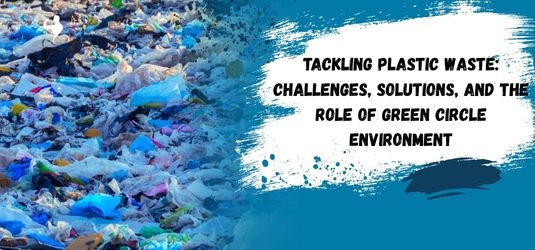
Plastic waste is one of the most pressing environmental challenges facing the world today. It pollutes land, rivers, and oceans, threatening wildlife and human health. The growing production and consumption of plastics have led to massive waste accumulation, much of which is not properly managed or recycled. Addressing plastic waste requires a comprehensive approach involving collection, recycling, innovation, and community participation.
The Environmental Impact of Plastic Waste
Plastic pollution affects every part of the environment, from city streets to the deepest ocean trenches. Plastics can take centuries to decompose, persisting in soils and waterways and breaking down into harmful microplastics. These microplastics enter food chains, harming aquatic life and potentially impacting human health. Plastic production and incineration also release significant greenhouse gases, contributing to climate change. In 2019 alone, plastic production and disposal emitted an estimated 850 million tonnes of CO₂, a number projected to rise sharply by 2050.
Challenges in Managing Plastic Waste
Managing plastic waste is complex due to several factors. First, there is a lack of effective waste segregation at the source, making recycling difficult and inefficient. Many regions also face inadequate infrastructure for collection, sorting, and recycling, resulting in much plastic waste ending up in landfills or the environment. The recycling process itself is complicated by the many types of plastics, each requiring different handling and processing methods. High costs and limited awareness further hinder the development of efficient waste management systems.
The Plastic Recycling Process
Recycling plastic waste involves several key steps. Collection systems gather plastic waste from households, businesses, and public spaces. The collected plastics are then sorted by type, such as PET, HDPE, or PVC, to ensure effective recycling. After sorting, plastics are shredded into small pieces and thoroughly washed to remove contaminants. The clean plastic is melted and formed into pellets, which serve as raw material for new products. These recycled pellets are used to manufacture a wide range of goods, from packaging to furniture, supporting a circular economy and reducing reliance on virgin plastics.
Innovative Solutions and Global Efforts
Innovative technologies and community initiatives are emerging to address plastic pollution. Solutions like river bubble barriers and solar-powered waste collectors are capturing plastics before they reach the oceans, preventing further environmental damage. International collaborations and stricter regulations are also driving improvements in plastic waste management and recycling infrastructure.
Conclusion: Green Circle Environment’s Commitment
Green Circle Environment is actively working to combat plastic waste through advanced recycling and sustainable waste management solutions. The company focuses on efficient collection, segregation, and recycling of various types of plastics, including hard-to-recycle materials. By adopting innovative technologies and promoting community awareness, Green Circle Environment helps reduce plastic pollution and supports a circular economy. Their efforts contribute to cleaner cities, healthier ecosystems, and a more sustainable future for all.








